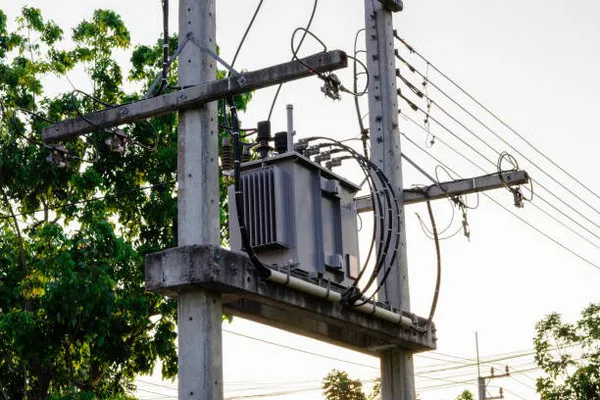Electrical transformers, indispensable components in the power distribution network, facilitate the efficient transmission of electrical energy by stepping voltage levels up or down. These transformers must be protected against various electrical faults to ensure continuous operation and prevent damage. Fuses play a pivotal role in this protection mechanism, providing a first line of defense against overcurrent conditions. This article explores the types of fuses used in transformer protection, their operating principles, and the criteria for selecting the appropriate fuse.
Understanding Transformer Protection
Transformers can be susceptible to faults such as overcurrent, short circuits, and internal failures. These faults can cause severe damage, leading to prolonged outages and costly repairs. Protective devices like fuses are essential to mitigate these risks. A fuse is an electrical safety device that operates to provide overcurrent protection of an electrical circuit. Its essential component is a metal wire or strip that melts when too much current flows through it, thereby interrupting the circuit.
Types of Fuses for Transformer Protection
Various types of fuses are used in transformer protection, each designed to address specific protection needs. The main types include current-limiting fuses, expulsion fuses, and liquid-immersed fuses.
1. Current-Limiting Fuses
Current-limiting fuses are designed to interrupt high fault currents before they reach their peak. This is achieved through their unique construction and operation mechanism. Inside a current-limiting fuse, there is a fusible element surrounded by a granular, non-conductive material like silica sand. When a fault occurs, the element melts and vaporizes, creating an arc that the surrounding sand quickly extinguishes. This rapid interruption limits the current magnitude and the energy released during the fault.
Current-limiting fuses are advantageous in protecting transformers because they minimize the mechanical and thermal stress on the transformer during a fault. They are highly effective in high-voltage applications where the potential for significant fault currents exists. These fuses are typically used in medium to high voltage transformers, ranging from 2.4 kV to 38 kV.
2. Expulsion Fuses
Expulsion fuses are another type of fuse used in transformer protection, particularly in outdoor and rural settings. They consist of a fusible element enclosed in a tube made of fiber or similar material. When a fault occurs, the fusible element melts and creates an arc. The arc’s heat generates gas that expels through the tube, effectively blowing out the arc and interrupting the current.
Expulsion fuses are cost-effective and provide reliable protection. However, they are not as fast as current-limiting fuses in interrupting fault currents. They are suitable for lower voltage applications and are commonly used in distribution transformers up to 15 kV.
3. Liquid-Immersed Fuses
Liquid-immersed fuses are designed for use in oil-filled transformers. These fuses are submerged in the same insulating oil that cools and insulates the transformer. When a fault occurs, the fusible element inside the fuse melts, and the oil helps to quench the arc, preventing the fault current from causing significant damage.
These fuses are particularly useful in high-voltage transformers and provide excellent protection due to their ability to manage and extinguish high-energy arcs effectively. Liquid-immersed fuses are commonly used in power transformers and industrial applications where reliable protection and durability are essential.
Criteria for Selecting Transformer Protection Fuses
Choosing the right fuse for transformer protection involves considering several critical factors:
Voltage Rating: The fuse must have a voltage rating equal to or greater than the transformer’s operating voltage. This ensures that the fuse can safely interrupt fault currents without causing insulation breakdown or arcing.
Current Rating: The fuse’s current rating should match the transformer’s normal operating current. It must be capable of carrying the full load current without nuisance tripping, while also providing sufficient margin to accommodate short-term overloads.
Interrupting Rating: The interrupting rating, or breaking capacity, of a fuse indicates the maximum fault current it can safely interrupt. This rating should be higher than the potential fault current in the transformer’s circuit to ensure effective fault clearance.
Time-Current Characteristics: The fuse’s time-current characteristics define its response to overcurrent conditions. These characteristics must align with the transformer’s protection requirements. For instance, a slow-blow fuse may be suitable for circuits with temporary overloads, while a fast-acting fuse is needed for circuits requiring quick fault clearance.
Coordination with Other Protective Devices: Fuses should be coordinated with other protective devices in the transformer circuit, such as circuit breakers and relays. This ensures that the fuse will operate in a manner that complements the overall protection scheme, providing selective protection and minimizing disruption to the power system.
Environmental Conditions: The operating environment, including temperature, humidity, and exposure to contaminants, can affect fuse performance. Fuses designed for outdoor use must be robust enough to withstand harsh environmental conditions without degradation.
Advantages and Disadvantages of Fuses in Transformer Protection
Advantages:
Simplicity and Reliability: Fuses are simple devices with no moving parts, making them highly reliable and easy to maintain.
Cost-Effective: Compared to other protective devices, fuses are relatively inexpensive and provide an economical protection solution.
Quick Response: Fuses can respond quickly to fault conditions, providing immediate protection for transformers.
Disadvantages:
Non-Reusable: Once a fuse operates, it must be replaced. This can lead to downtime and maintenance efforts.
Limited Coordination: In complex power systems, coordinating fuses with other protective devices can be challenging, especially in achieving selective protection.
Finite Interrupting Capacity: Fuses have a finite interrupting capacity and may not be suitable for very high fault current scenarios.
See Also Why Step Up Transformer Decreases Current
Conclusion
Fuses are vital components in the protection of electrical transformers, offering a reliable and cost-effective solution for safeguarding against overcurrent conditions. The choice of fuse—whether it be current-limiting, expulsion, or liquid-immersed—depends on the specific requirements of the transformer and its operating environment. By carefully selecting and applying the appropriate fuse, electrical engineers can enhance the safety and reliability of power distribution systems, ensuring continuous and efficient operation of transformers. Understanding the nuances of each fuse type and their operational characteristics is essential for optimizing transformer protection and maintaining the integrity of the electrical network.

